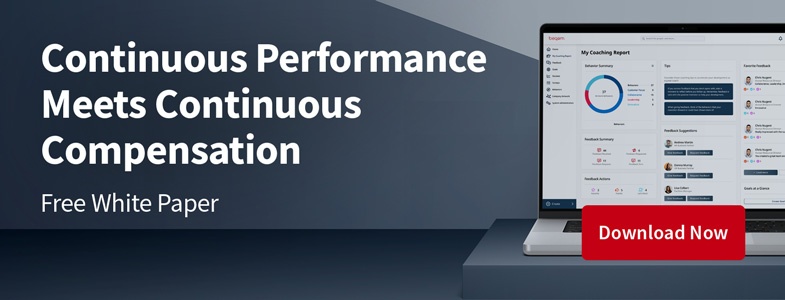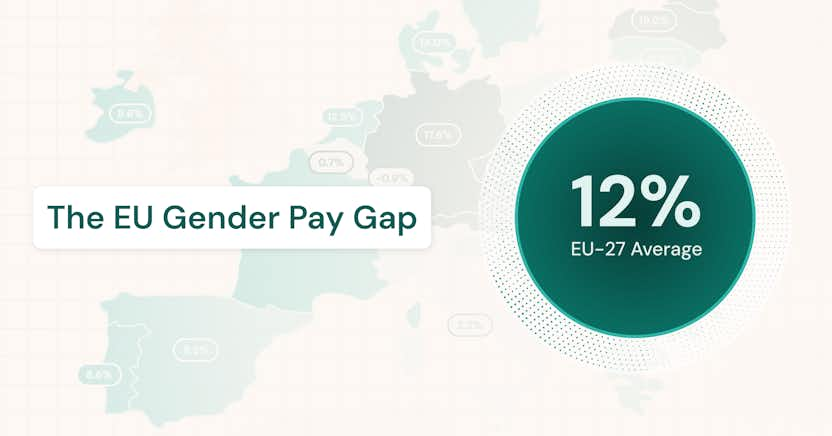The Benefits of a People-Focused Approach to Performance Management

Learn more about the following beqom products
It’s no secret that getting your employees on board with your goals and values can enable greater success within a business. But what’s the best approach to achieving this? HR practitioners are increasingly challenging traditional “system-focused” methods of performance management and gearing towards people-focused management styles.
Writing in Forbes, Srikant Chellappa proposed a “superior alternative” to traditional forms of people management. He believes that “People Enablement” is the way forward. According to Chelleppa, this approach is built on trust, alignment, and support; and with recent changes in the workplace, it’s more important than ever before.
What are the benefits of a people-centric approach, and how can you implement it?
Why lean towards a people-centric approach to performance management?
When we are connected remotely, outside of an office situation, micromanaging can damage employee morale and productivity. It’s better to get ahead of the curve by developing systems, processes, and a culture that reflect the modern workplace. This can help employees feel supported and enabled, leading them to become more engaged in their work, as disengagement is often the result of insufficient performance management practices.
That’s exactly why managers are leaning towards a human-centric approach to performance management. Some of the core aspects of a people-centric approach include building authentic relationships with your people, prioritizing employee wellbeing, regularly checking in, providing support and coaching, and sometimes even prioritizing recognition over rewards.
The idea of a “top-down” approach to managing employee performance is becoming somewhat outdated as businesses evolve. Some believe that top-down management practices are necessary when setting clear goals and expectations, but they can leave employees feeling powerless. This in turn can lead to a lack of motivation. What’s more, modern practices enable the same level of clear goal-setting without relying on a top-down management style.
For instance, letting people take control of managing their performance can be beneficial in several ways. The results are astonishing when employees are given constructive guidance from managers, as well as HR being an enabler for positive change and the achievement of goals.
This method can encourage learning and growth, enabling each employee to realize their full potential individually and as a key contributor to the company. The challenge often lies in putting an adequate system in place to make this happen. This is where performance management systems such as beqom Continuous Performance Management (CPM) can help. beqom CPM allows for an intuitive experience; because it’s easy to use, people need limited guidance. It provides a seamless end-to-end experience that provides a foundation for a people-focused performance management system.
Comparing people-focused vs. system-focused performance management
To further illustrate the differences between a people-focused and a system-focused approach, let’s look at two workplace scenarios.
In scenario A, an employee is briefed on projects and tasks that must be completed. They struggle to complete the work to a sufficient standard. The employee feels that certain changes could improve the way they do things. They feel there is little point in trying to communicate this to their manager as it could be difficult to get their time and attention. The employee may also believe their feelings aren’t taken seriously. Over time they become frustrated and increasingly disengaged from their work.
In this scenario, there is little or no communication between the employee and their manager regarding their performance or how they feel about their systems and processes. They are not getting the support they need. On completion of the task, they once again return to the same cycle feeling discouraged and frustrated.
In scenario B, the employee is briefed on the projects and tasks they must complete. After a while, the employee is struggling to meet deadlines. They notice that there are certain aspects of their processes that could be improved. The employee reaches out to a manager through their performance management system. The manager and employee then engage in a two-way stream of conversation. The manager and the employee efficiently discuss their options. The employee feels empowered and is happy being heard. The quality of their work improves as a result of feeling at ease.
What can be taken from this example is the understanding that a working relationship with those you manage is a relationship after all. Any strong relationship involves adequate communication. In a work scenario, sometimes all that’s missing is a vehicle through which the employee and their manager can easily communicate. That’s where the right performance management system plays a key role.
The benefits of a people-focused performance management system
So what are some of the benefits of a people-focused system?
- It can help employees align with broader company goals.
- It increases the likelihood that employees will feel like they have a greater purpose within an organization.
- It makes being managed a more enjoyable experience.
- It means focusing on nurturing talents which can lead to a higher standard of work.
- The focus on a two-way stream of conversation can be beneficial for managers providing feedback and for employees who need support.
How beqom CPM supports a people-centered approach
beqom CPM gives employees the chance to engage managers and HR in an open dialogue. It opens up a support network for the employee. It allows us to move away from a somewhat mechanical system towards a humanized workplace where communication is key.
When we fail to recognize employees as human beings, they may be left feeling detached from their work. When it comes to humanizing performance management, it’s almost crucial that employees participate as much as possible. It should be the case that employees have a desire to engage with their managers and HR so that the process can be streamlined, supporting employees in reaching their fullest potential. When we engage and trust employees, it legitimizes their capabilities, driving them to succeed: an empowered employee is a valuable employee.
The modernization of performance management goes hand-in-hand with the idea of humanizing the workplace. When performance management systems are designed for human beings, it improves the employee experience and increases engagement, driving better results. What’s good for the employee as an individual, is good for the business – and beqom is there to help you put your people first.
Want to find out how a people-focused performance management system can bring value to your organization? Book a no-strings-attached chat today.








